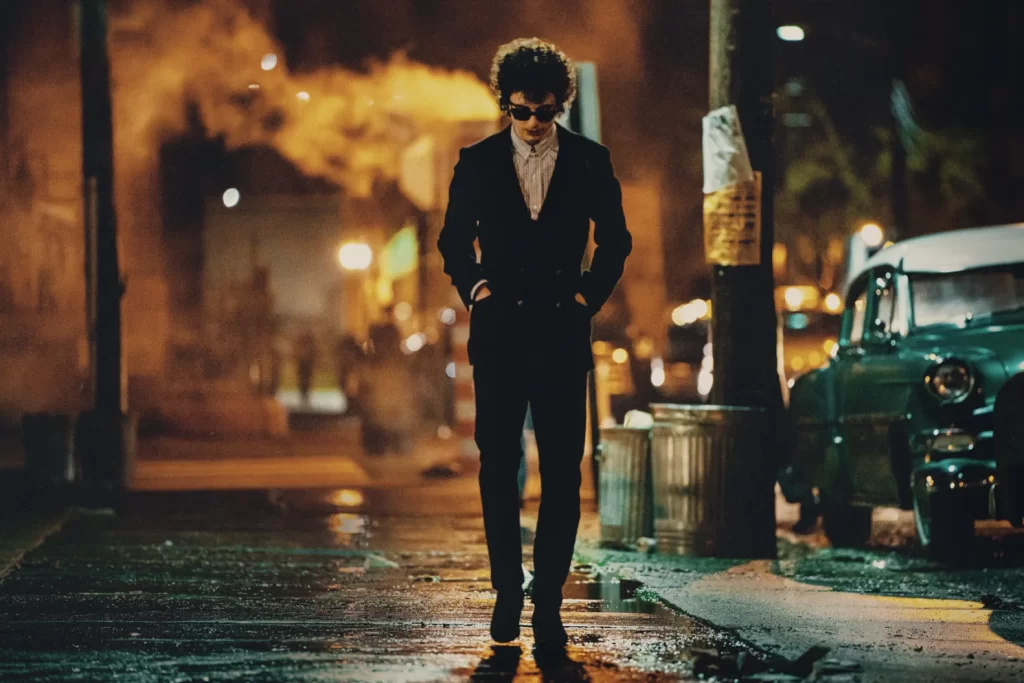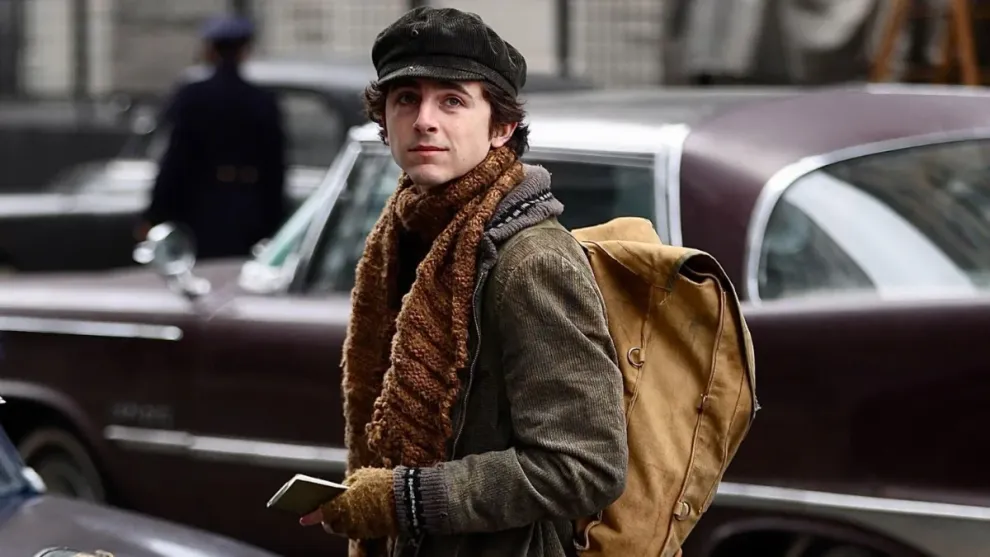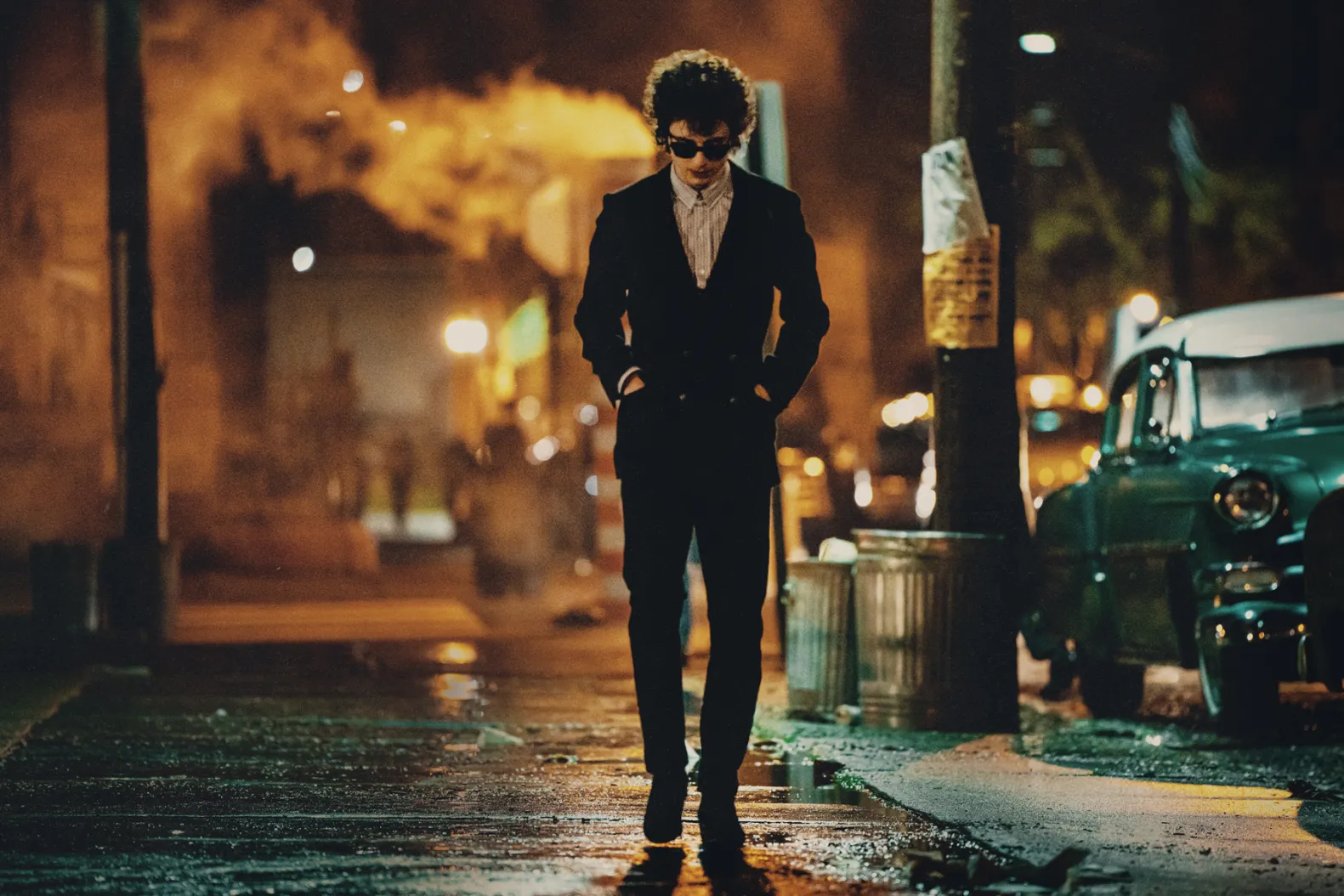A Complete Unknown Film Review – A Journey to the Electric Revolution
A Complete Unknown Film Review | Adam Manery | A Complete Unknown is a new Bob Dylan biopic starring Timothée Chalamet as Dylan, and everyone is wondering, can “Tiny Tim” pull it off?
Highway 61 Revisited is my most listened-to album of all time. When I was living in England for a couple of years, I bought an old car that only had a tape player. I bought a total of four tapes, one of them being Dylan’s Highway 61 Revisited, which essentially played on repeat everywhere I went.
So, considering that this movie is essentially one big buildup to Highway 61 Revisited and Bob going electric, I might be slightly biased. Still, I think I can put on my metaphorical Dylan cap of objectivity here and talk about A Complete Unknown. It comes from director James Mangold, who has directed projects like Wolverine, Ford vs. Ferrari, and probably most relevantly 2005’s Walk the Line, where we definitely see some stylistic parallels.
A Complete Unknown is rooted in the 2015 book Dylan Goes Electric, and the screenplay is co-written by Mangold and Jay Cocks, who is most known for writing with Martin Scorsese—you know, no big deal. He was also a critic for Rolling Stone magazine before transitioning to writing for film, which makes him perfect for this particular project. With these two behind the story here, we’re given a very solid foundation.
Before diving into Timothée Chalamet’s performance, it’s important to acknowledge the cast as a whole. We have a pretty stacked list of actors here: Edward Norton as Pete Seeger, Elle Fanning does a great job as Sylvie (a play on Dylan’s girlfriend Suze from the time, Dylan himself—who served as an executive producer on the film—requested not to have the real name used).
We also have Monica Barbaro as Joan Baez, Scoot McNairy as Woody Guthrie. Of all of these, Barbaro’s performance as Joan Baez stands out above the others. As an actress, she may not be a household name, but she rose to some prominence after her role in Top Gun: Maverick. In A Complete Unknown, she provides the most grounded performance in a sea of somewhat hyperbolized characters.

From someone who has always held a special place for the American folk tradition, it is pretty wonderful to see so much space and weight given to folks like Woody Guthrie and Pete Seeger in this film. And what Mangold is doing is twofold. He’s paying homage to the folk greats, just as Dylan did in the early ’60s, while also shining a light on the innovation and the experimentation that is soon to occur in this folk-rock space in the ’60s.
While the day-to-day relationships between Dylan and these folk icons might be exaggerated in the film, they’re essentially there to serve as a symbol of the dying kind of purist folk tradition and this emergence of folk-rock and experimentation.
There are nods to so many other folks of the era as well—obviously Johnny Cash. We have Bob Neuwirth, John Hammond, Barbara Dane, Tom Wilson, Mark Spoelstra, and even a little bit of Dave Van Ronk, who is a subject of my favorite folk film, Inside Llewyn Davis. Suffice it to say, if you appreciate the music of this time, there are so many little Easter eggs sprinkled throughout that just looking for them can make the film enjoyable for that reason alone.
One of the true strengths of the film is its beautiful recreation of Greenwich Village in New York. The majority of the film was shot in New Jersey, believe it or not—they didn’t want to shoot in New York and try to erase what has happened to these streets—but they ended up doing a really beautiful job of capturing this bohemian energy of the neighborhood at that time.
On a personal level, I love to see a scene at the Chelsea Hotel, this kind of classic haunt for so many folks of the era—some who weren’t in the film like Joni Mitchell, Jim Morrison, Leonard Cohen.

All of this being said, most folks are primarily concerned with Timothée Chalamet as Dylan, and I’m going to be honest here: I still haven’t completely made up my mind. The music itself exceeded my expectations. According to Chalamet, the music we hear in the film is the live music recorded on-site rather than studio recordings, which is a great decision. Because of this, we get some of that Dylan charm—it’s imperfect but beautiful. I closed my eyes at various times throughout the film, and I felt truly transported.
It’s the moments in between, though, that I can’t quite make my mind up about. Chalamet went into this project knowing very little about Dylan, but in part due to the pandemic delays, he ultimately became a huge fan. There’s no doubt that he did his research—he picked up on so many of the little mannerisms and ways of speaking that make Dylan “Dylan”. But there is just this part of me who couldn’t quite escape the feeling that I’m watching Timothée Chalamet trying very, very hard to be Dylan, rather than getting lost in the moment and feeling like I was seeing Dylan on screen.
In fairness, it’s a monumental task to truly embody Dylan—his subtle, or not-so-subtle at times, arrogance, his constant obfuscation, and his mumbling soliloquies. It’s a lot to take on and have it feel natural. And what ended up happening, from my perspective at least, is that Chalamet leaned into some of those more exaggerated tendencies of Dylan. Not that they were untrue, but as a result of leaning into these particular aspects, he makes himself into a hyperbolized version of the songwriter.
Still, there are some moments—normally from a side profile, with the tousled hair and this look of mystery—where I did see Dylan.
At the end of the day, A Complete Unknown is definitely worth a watch, particularly if you have an interest in the music and the culture of the ’60s, especially in New York’s Greenwich Village. And I know for one that I’ll be going back to revisit that classic Highway 61. | A Complete Unknown Film Review
Full Written Reviews HERE





Pingback: Top 24 Films of 2024 - Points of Review
Pingback: Every Best Picture Nominee Ranked | Oscars 2025